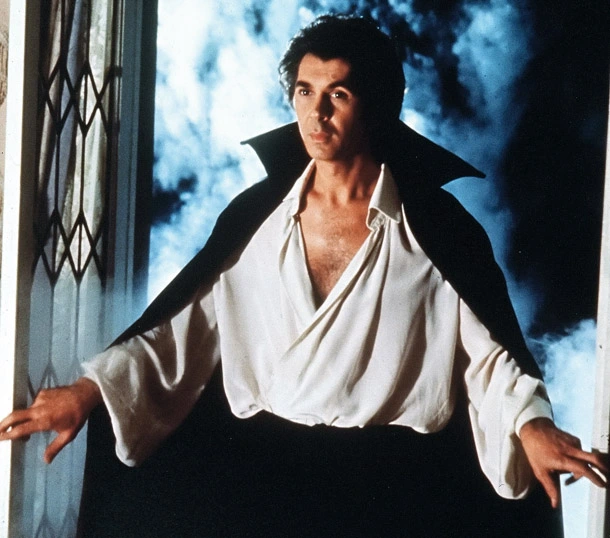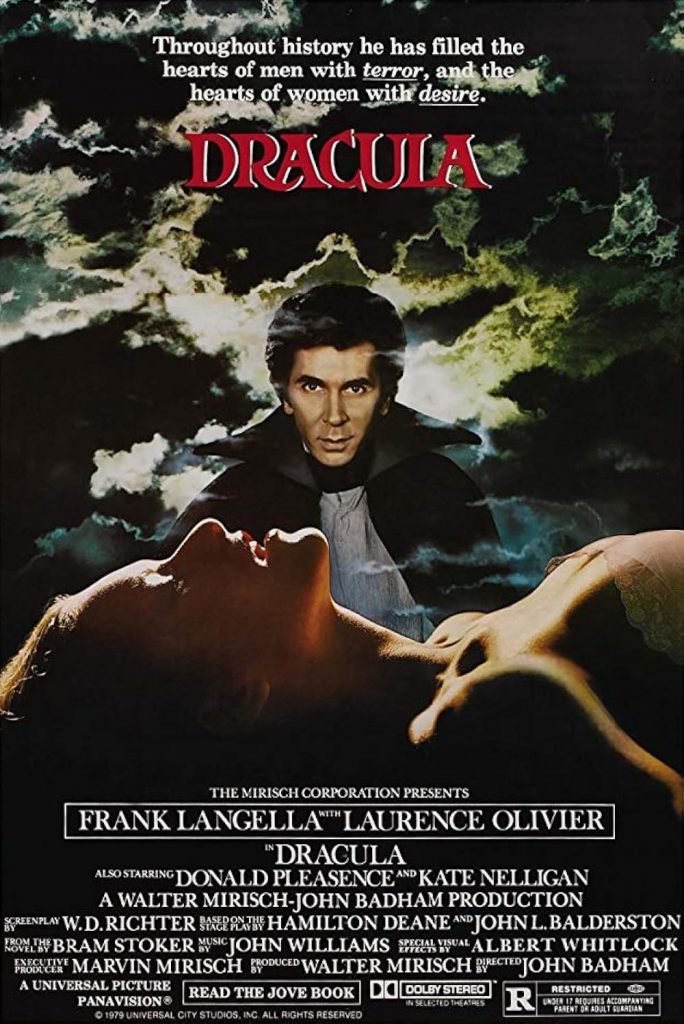Dracula (Reviewed By Lisa Marie Bowman)
I have to admit that, when I first sat down to watch the 1979 version of Dracula, I wasn’t expecting much. Considering that it was made in 1979, I immediately assumed it would be a disco Dracula film.
(Actually, a disco Dracula sounds kind of fun….)
The 1979 version of Dracula is not a Disco Dracula. This Dracula takes place in 1913 and there’s actually very little about it that would lead you to suspect that it had been made in the 1970s. Instead, it feels more like a tribute to the colorful and lushly erotic Dracula films that Hammer produced in the 60s. Except, oddly, the Hammer films were far more bloody than the 1979 version. Oh, don’t get me wrong. There’s a few gory scenes in 1979’s Dracula. Towards the end of the film, there’s a rather bloody impaling. Dracula graphically breaks another character’s neck as we watch. But, even with those scenes in mind, the 1979 Dracula feels oddly restrained at times.
In this version of Dracula, the title character is played by a youngish Frank Langella. I have to admit that it was a bit odd to see Langella playing someone other than a corrupt authority figure. Dare I say it, Langella is almost sexy in this film and his somewhat feral features are perfect for a character who considers wolves to be “the children of the night.” Langella’s performance falls between the haughty charm of Bela Lugosi and the animalistic fury of Christopher Lee. And while Langella’s performance never quite reaches the heights of those two actors, he’s still effectively cast.
As for the film itself, it starts with a shipwreck near a local asylum. One of the passengers on that ship is the charming but mysterious Count Dracula. Dracula introduces himself to the head of the asylum, Dr. Jack Seward (Donald Pleasence, stealing almost every scene in which he appears). There’s an immediate attraction between Dracula and Seward’s daughter, Lucy (Kate Nelligan). That does not amuse Lucy’s fiancee, Jonathan Harker (Trevor Eve, who is perhaps the whiniest Harker in film history).
Meanwhile, Lucy’s best friend, Mina (Jan Francis), has been taken ill and it might have something to do with the two puncture marks on her neck. After Mina dies, her father (played by Laurence Olivier) comes to investigate. Her father’s name? Abraham Van Helsing.
This version of the story gets off to a nice start, with director John Badham giving us a mix of lush romanticism and gothic moodiness. I’ve already talked about Langella’s performance but Donald Pleasence and Laurence Olivier also distinguish themselves. It’s obvious that these veteran performers enjoyed playing opposite each other and there’s a lot of pleasure to be found from watching Pleasence and Olivier compete to see who can steal the most scenes.
Unfortunately, after that strong first hour, Dracula slows down. Once Seward and Van Helsing know that Dracula is a vampire, the whole movie becomes about finding excuses for them to not do anything about it. The final 40 minutes feel almost like filler and, at one point, you’re required to believe that an elderly man, who has been seriously wounded, could still find the strength to swing a hook into a much stronger person’s back.
In the end, the 1979 Dracula is more of an intriguing oddity than a definitive version.


